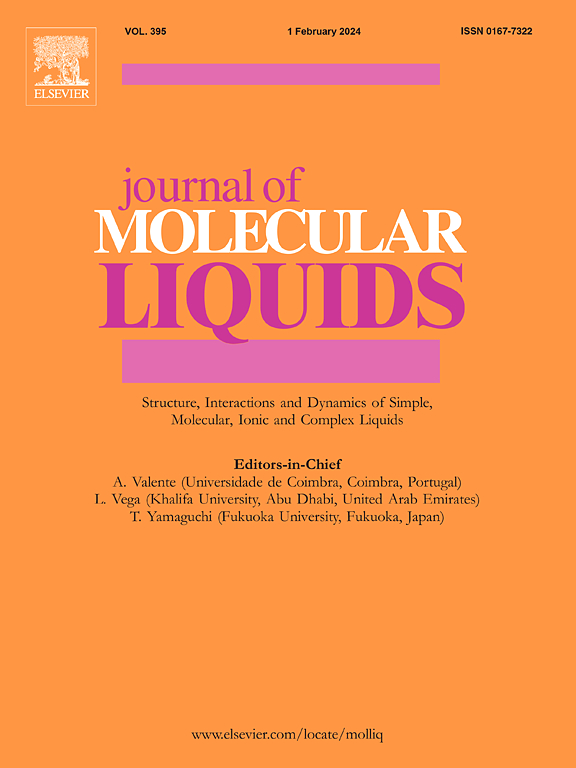Modified release and permeation of umifenovir with SBE-β-cyclodextrin and polymer: Impact of biorelevant gastrointestinal fluids
IF 5.3
2区 化学
Q2 CHEMISTRY, PHYSICAL
引用次数: 0
Abstract
In this study, solubility, dissolution and permeation processes of poor soluble antiviral anti-SARS-CoV-2 umifenovir (UMF) were improved with sulfobutylether-β-cyclodextrin (SBE-β-CD) solutions and solid dispersion (SD). The low pH dependent equilibrium solubility of UMF at 37 °C was estimated: pH 1.6 (1.91 mM), pH 5.0 (1.98∙10-1 mM), pH 6.5 (2.43∙10-2 mM). The maximal increase of 66.7-fold was detected with SBE-β-CD in buffer pH 6.5 solution. The amounts of 0.22 % (UMF pure) and 11.54 % (UMF/SBE-β-CD_SD) of a dose were dissolved within 7 h in buffer pH 6.5 medium, whereas in pH 1.6 the whole dose was released from UMF/SBE-β-CD_SD. Screening of biocompatible polymers to improve the UMF/SBE-β-CD_SD dissolution and permeation in pH 6.5 showed the best potential of PEG 1000 (10 %). The most efficient systems were studied in biorelevant media. Findings of the study demonstrated the importance of disclosing the UMF solubility, dissolution and permeation under physiologically relevant conditions in order to gain insights into their performance after oral administration.

求助全文
约1分钟内获得全文
求助全文
来源期刊

Journal of Molecular Liquids
化学-物理:原子、分子和化学物理
CiteScore
10.30
自引率
16.70%
发文量
2597
审稿时长
78 days
期刊介绍:
The journal includes papers in the following areas:
– Simple organic liquids and mixtures
– Ionic liquids
– Surfactant solutions (including micelles and vesicles) and liquid interfaces
– Colloidal solutions and nanoparticles
– Thermotropic and lyotropic liquid crystals
– Ferrofluids
– Water, aqueous solutions and other hydrogen-bonded liquids
– Lubricants, polymer solutions and melts
– Molten metals and salts
– Phase transitions and critical phenomena in liquids and confined fluids
– Self assembly in complex liquids.– Biomolecules in solution
The emphasis is on the molecular (or microscopic) understanding of particular liquids or liquid systems, especially concerning structure, dynamics and intermolecular forces. The experimental techniques used may include:
– Conventional spectroscopy (mid-IR and far-IR, Raman, NMR, etc.)
– Non-linear optics and time resolved spectroscopy (psec, fsec, asec, ISRS, etc.)
– Light scattering (Rayleigh, Brillouin, PCS, etc.)
– Dielectric relaxation
– X-ray and neutron scattering and diffraction.
Experimental studies, computer simulations (MD or MC) and analytical theory will be considered for publication; papers just reporting experimental results that do not contribute to the understanding of the fundamentals of molecular and ionic liquids will not be accepted. Only papers of a non-routine nature and advancing the field will be considered for publication.
 求助内容:
求助内容: 应助结果提醒方式:
应助结果提醒方式:


